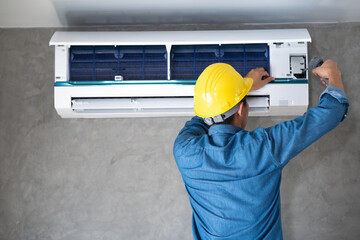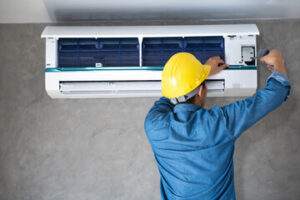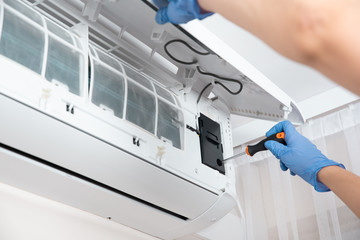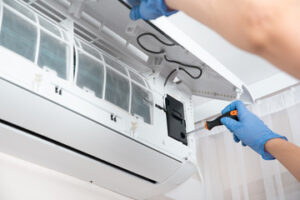The HVAC industry consists of three customer segments: residential customers, commercial clients, and industrial customers. Developing marketing strategies that target these customer segments can help you reach a wider audience and increase your sales revenue.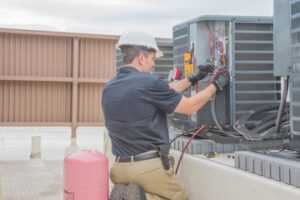
Licensed contractors are required to carry liability insurance. This covers any damage that may occur during a repair job. In addition, they are familiar with local building codes and regulations. Contact 24 Hour HVAC Company for professional help.
Whether it’s installing, servicing, or repairing an HVAC system, homeowners want to know that they’re working with professionals who will do a great job. They want to work with a company that will provide high-quality service, offer a guarantee or warranty, and stand behind their work. In addition, they want a company that can quickly and accurately determine the problem and provide an estimate of how long it will take to fix it.
An HVAC business can use a variety of strategies to increase sales and build customer loyalty. For example, they can create an effective website and engage in marketing activities to attract new customers. They can also offer discounts or promotions to encourage customers to buy their products.
A well-structured HVAC company will have a dedicated team for each area of the business. The executive team sets the strategy and overall goals for the company, while the sales team is responsible for generating leads and building relationships with potential clients. The installation and service teams deliver the services, and the administrative team handles paperwork and billing.
The best way to find an HVAC company is by asking friends and neighbors for recommendations. Also, check out online reviews on websites like Better Business Bureau, Google Reviews, and Yelp. These reviews will give you a good idea of the quality of the company’s work and its reputation.
It’s important to choose an HVAC company that has been in business for a long time and has a track record of reliability. Also, look for certifications from industry organizations such as NATE, which shows that the company has been trained and adheres to industry standards. You can also find out if the company is licensed in your state by checking with your local government.
Personalized service
An HVAC system is essential to keeping a home warm in the winter and cool during the summer. It also keeps the air clean and comfortable. Whether you are having problems with your heating or cooling systems, it is important to choose a professional and trustworthy company. A good HVAC company will provide you with personalized service and will be able to meet your specific needs.
Personalized service is a critical component to business success. According to Segment’s 2017 State of Personalization report, 44% of customers who are satisfied with personalized service will become repeat customers. This is because customers feel that they are getting the attention and care that they deserve.
In addition to providing personalized services, a good HVAC company will also offer additional services that can help you save money on energy costs. These services include indoor air quality testing, duct cleaning, and energy audits. They can help you make your heating and cooling system more efficient, which will help you save money on electricity bills.
A good HVAC company will also have a wide variety of equipment to keep up with the demands of its customers. This includes a range of tools, such as ladders and screwdrivers, as well as more advanced equipment like furnaces and air conditioners. In order to ensure that these systems are properly maintained, a good HVAC company will have a maintenance schedule for its employees to follow.
Lastly, a good HVAC company will have insurance for its employees. This is important because HVAC technicians are often working in customers’ homes and dealing with heavy equipment. This type of insurance protects the business against jobsite accidents, theft, and property damage.
Experienced staff
When choosing an HVAC company, it is important to look for one that has a highly trained and experienced staff. This will help ensure that the service is done correctly and quickly, which can save the client money in the long run. The best way to find out whether a company has an experienced staff is to ask them about their credentials and experience. If you have any concerns, you should also ask about the cost of their services and whether they provide any guarantees or warranties.
A good HVAC company will offer a wide range of services to meet their clients’ needs. This includes installation, maintenance, and repair. The installation process involves installing a new heating, ventilation, and air conditioning system in the home or business. This can include everything from selecting the best system for the property to physically installing it. Maintenance services involve regularly scheduled inspections of the HVAC system to keep it running efficiently. This can include cleaning ducts, changing filters, and testing electrical circuits. Finally, repair services involve repairing or replacing faulty parts in the HVAC system.
To become an HVAC technician, you must have a high school diploma or GED certificate and pass a rigorous exam. Several local associations and trade unions offer apprenticeship programs, which combine classroom instruction with hands-on training. These programs typically last 3-5 years and pay a stipend or hourly wage while you learn the trade.
Aside from the equipment costs, an HVAC business will need to spend a large amount of money on marketing and advertising. This is a critical step in growing a successful business, as it helps attract customers and increase sales. Some marketing strategies that an HVAC company can use to increase sales include a strong online presence, customer-oriented service, and offering discounts and promotions.
Customer testimonials
Customer testimonials are a powerful way to establish trust and credibility in your HVAC service business. They can help you stand out from competitors by providing a humanized perspective and addressing potential clients’ concerns and doubts. Ideally, you should feature customer testimonials that highlight different aspects of your services, such as responsiveness, quality, and affordability. These testimonials should be accompanied by photos and videos to enhance their impact. It is also important to prompt your customers to be candid and specific in their feedback. They should share their initial concerns and describe how your HVAC company addressed them to meet their needs. This will give your customers a real-life picture of how your services work in their unique situations. Moreover, it will build trust and credibility by showing how your service can benefit their lives. It will be more persuasive to your potential clients than a glossy brochure or commercial.
Technology
In the HVAC industry, technology is constantly evolving and influencing virtually every aspect of business. From eco-friendly heating and cooling options to field service management software that improves operational efficiency, there are many new trends in technology that are making a huge impact on the industry.
Today’s customers expect HVAC technicians to be familiar with the latest technology trends. These trends include software-enabled systems that collect data, allowing technicians to identify usage trends and system performance so they can perform preventive maintenance and identify the source of a malfunction for quicker repairs. Durable nameplates allow technicians to quickly identify components and specifications, and scan a barcode to document maintenance and repair activities. These technologies help technicians save time and money by reducing the number of trips they need to make.
A good HVAC company will also utilize technology to enhance customer experience. For example, they will offer a mobile interface for clients to view their scheduled appointments and receive timely notifications. They will also use a field service management software to provide quick job scheduling and dispatching. This will help them minimize manual processing and maximize productivity.
Another way that HVAC companies can increase sales is by providing superior customer service. This will help them build trust with their customers and create a loyal following. They can do this by responding promptly to inquiries and addressing complaints in a timely manner.
Finally, HVAC companies can also increase sales by utilizing marketing strategies. These strategies may include offering discounts or promotions and creating a strong online presence. They can also offer free installations or other incentives to attract new customers. In addition to these techniques, they can also use social media to promote their services and products.

